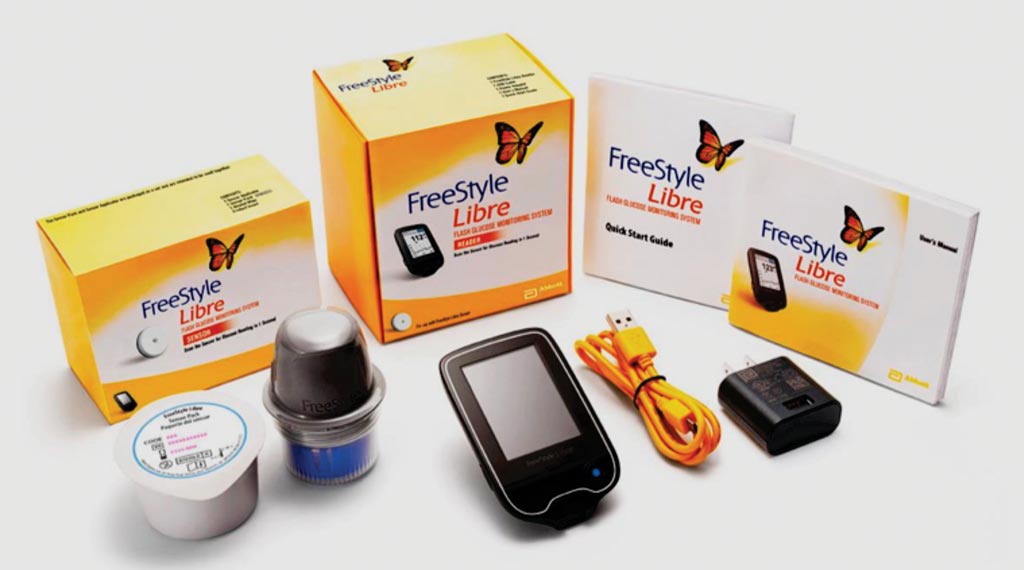Sensor Monitoring System Improves Glucose Control for Diabetics
By LabMedica International staff writers
Posted on 02 Mar 2017
People who scan more frequently using sensor monitoring system spend less time in hypoglycemia (low blood sugar) or hyperglycemia (high blood sugar) while having improved average glucose levels.Posted on 02 Mar 2017
The monitoring system consists of small, round sensor worn on the back of the upper arm for up to 14 days, measures glucose every minute in interstitial fluid through a small filament that is inserted just under the skin and held in place with a small adhesive pad. A reader is scanned over the sensor to get a glucose result painlessly in less than one second.

Image: The FreeStyle Libre monitoring system for diabetes (Photo courtesy of diaTribe).
A full data set had been generated from 50,831 readers, which were used to scan 279,446 sensors. This constituted 409.4 million glucose measurements, 86.4 million monitoring hours and 63.8 million scans representing more than 50,000 users across the Europe region. De-identified data was collected over a period of 18 months when readers were connected to the PC-based software with an active internet connection. All information was aggregated. No personal data was utilized or shared.
The key findings of the real-world data of the FreeStyle Libre sensor monitoring system were users checked their glucose levels an average of 16.3 scans per day; improved HbA1c: average glucose level decreased as scan rate increased with estimated HbA1c decreasing from 8.0% to 6.7%; there was a reduction in hypoglycemia: time spent below glucose levels of 70, 55 and 45 mg/dL decreased by 15%, 40% and 49%; there was a reduction in hyperglycemia: time above 180 mg/dL decreased from 10.5 to 5.9 hours per day; and there was an increased time in range: time in glucose range (70-180 mg/dL) increased from 12.0 to 16.8 hours per day. The FreeStyle Libre system generates an Ambulatory Glucose Profile (AGP) that provides a visual snapshot of glucose levels, trends and patterns over time.
Ramzi Ajjan, MD, an associate professor from the University of Leeds said, “Patients report that the system helped them gain a better understanding of their glycaemia by enabling multiple daily glucose checks discreetly and conveniently. The system's painless nature of glucose testing is praised by patients with one commenting to me, 'you saved my fingers’.” The study was presented at the 10th International Conference on Advanced Technologies and Treatment for Diabetes (ATTD) congress held February 15-18, 2017, in Paris, France.












.jpg)
